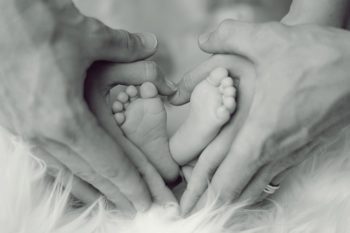 WHAT MIGHT HAVE BEEN
WHAT MIGHT HAVE BEEN
Hello everyone and welcome to another FACTUAL FRIDAY.
Today is the first day of December. And, as another year comes to an end, I often find myself thinking about “what might have been.” This is not to say I’m not bursting with gratitude every day for all I have and all I am. But, as a survivor of three different cancers, I sometimes reflect on how my life might have unfolded if I had not spent so much of my adult life fighting this disease.
Specifically, I wonder what my life would have been like if I had been able to have children.
As many of you know, I lost my ability to become pregnant when I was diagnosed with my first cancer, which was a stage II early-onset colon cancer. It caught me completely by surprise as I had no idea the disease ran in my family.
Of course, I underwent surgery – an anterior re-section – as well as chemotherapy and radiation. And, of course, like many other women in their twenties or thirties who receive a cancer diagnosis, I tried to harvest my eggs before the treatments began. I went through the entire egg-retrieval procedure prior to my chemotherapy, but unfortunately discovered that the damage to my reproductive system had already been done.
In my case, I experienced a phenomenon known as “surgical menopause.” This means that the surgery to remove my tumor also plunged my body into survival mode shutting down my ovaries and their ability to produce eggs.
So, I thought I’d share some information today for all my women friends about the process of egg retrieval and oocyte cryopreservation – or “egg freezing” as it is often called. For decades men have been able to freeze their sperm for future use. But now, women also have this reproductive option – and modern technology has greatly increased the reliability and success rate of this particular procedure.
To explain, let’s begin with a FEW FACTS ABOUT THE FEMALE BODY.
1) A woman is born with all the eggs she will ever have.
2) When hormonal activity begins at puberty, eggs are released every month during ovulation. And, of course, if they are not fertilized the eggs are released from the body during menstruation.
3) Around the age of 37, the egg reserve in the female body declines sharply.
4) Overall, a woman’s fertility level drops significantly between her late thirties and her early forties.
Of course, in today’s world many women are choosing to marry and begin families later in life. Many choose to postpone pregnancy in order to focus on their careers. And, some women face medical conditions that threaten fertility or disallow safe pregnancies in the present or immediate future.
In these cases, EGG RETRIEVAL AND CRYOPRESERVATION may be an option. So, let’s continue with a BRIEF OVERVIEW of the process and what it entails.
1) First, a woman will be screened for HIV, Hepatitis B and C and other medical conditions that would be counterproductive to the procedure.
2) Next, most women will undergo ovulation induction, which refers to the use of fertility medications (delivered orally or by injection) to stimulate the ovarian follicles into producing multiple eggs in a single cycle.
3) Now, a ten-minute egg retrieval or transvaginal aspiration under a mild anesthesia is conducted whereby an ultrasound-guided needle is inserted into the ovary to collect the eggs.
4) The retrieved eggs typically are then “flash frozen” in a process known as vitrification – a technique that prevents ice crystals from forming, protects the egg from toxic cryoprotective solutions and preserves the health of each egg.
5) The frozen eggs, which will remain healthy for up to five years, then may be fertilized at a future date and placed in a woman’s uterus through the process of in vitro-fertilization or IVF.
6) It is advisable to freeze about ten eggs, which are stored in cylinders filled with liquid nitrogen in a repository known as a cryobank.
And, IN CASE YOU’RE WONDERING . . .
1) There is no increase in chromosomal defects in embryos derived from frozen eggs.
2) There is no evidence of an increased rate of birth defects in children born from this process when compared to the general population.
3) Approximately 2,000 babies have been born from frozen eggs and in vitro fertilization.
4) Women in their thirties and those facing fertility-risk medical conditions are the ideal candidates for this procedure.
Well, there we have a simple yet hopefully helpful explanation of this particular procedure for preserving a woman’s reproductive options.
It’s not a decision to be entered into lightly. It takes time, dedication and a large financial commitment. And, there is no guarantee that the procedure will always be successful.
But, for those of us who wish to delay pregnancy – AND those who wish to focus on their careers before starting a family – AND those who have an unpredictable family history of early-onset menopause – AND those who face significant medical conditions or cancer and the toxic effects of chemotherapy and radiation – this is a procedure that can give us HOPE. Hope for a future family and for children of our own.
Thanks again everyone for joining me. As always, I wish you all a WONDERFUL HOLIDAY SEASON with family and friends. And, over the next few weeks I look forward to sharing some GREAT TIPS for a HEALTHY AND HAPPY HOLIDAY with you and yours.
Until then, stay in GOOD HEALTH and . . .
TAKE THE COURSE AND TAKE CHARGE!
FOR MORE INFORMATION ON THIS SUBJECT PLEASE REFER TO:
THE SINGLE SOURCE CANCER COURSE, Volume 2, Pages 71 – 82, Preserving Her Options.



Leave a Comment